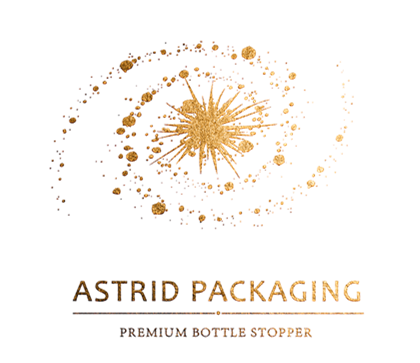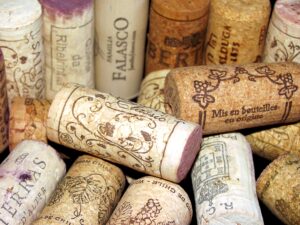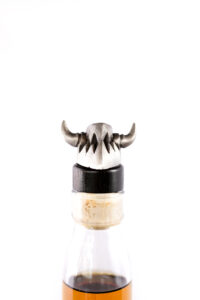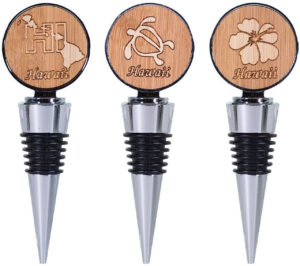In the world of wine corks, corks and screw caps are not all. This article introduces the five main types of wine stoppers commonly used today to see their respective advantages and disadvantages.
Natural cork
Cork bottle sealing is the most popular way of wine bottle sealing at present. About 80% of wine will use cork bottle sealing, especially high-quality red wine.
Unlike synthetic wine stoppers, corks are cut from natural oak bark, and this method has been popular for centuries.
Benefit: the cork can be easily inserted into the wine bottle, which can achieve perfect sealing effect after expansion, but its permeability characteristics can make the wine in the bottle contact with the outside air through the cork’s own fine pores, so as to achieve the aging effect.
Disadvantages: the cork must be opened with a bottle opener, and the cork may be broken. In addition, cork has a big hidden danger – cork pollution, which will make the wine smell musty or wet paperboard.
Screw Cap
The screw cap is made of aluminum and can be recycled. It is adopted by many wine merchants in Australia and New Zealand.
It is mainly used for bottle sealing of white wine and some high-quality red wine.
Lee: compared with the cork, the screw cap has better sealing performance, but it is not completely sealed. It just isolates more air, which helps to protect the original fruit aroma of the wine.
Disadvantages: because the “breath” of wine is not smooth, it may make the aroma of wine mixed with sulfur dioxide.
Synthetic Cork
Most of the artifacts we mentioned are made of plastic from oil, but not synthetic corks. Many synthetic corks are made of oak chips or used corks.
Benefit: synthetic cork is similar to natural cork in appearance and function, which can ensure the normal “breathing” of wine, and there is no risk of cork pollution.
Cons: it is said that synthetic corks will give wine a taste of chemicals.
Vinolok
The glass stopper consists of a glass wine stopper and an O-shaped gasket, which is somewhat similar to the old kettle cover.
This wine stopper has been used in several wineries in Germany and Napa Valley in the United States.
Benefit: the glass stopper has no effect on the taste and aroma of wine, and can seal the wine bottle, reduce the risk of oxidation and ensure the original flavor of the vineyard.
Disadvantages: the glass stopper must be manually plugged, so it costs a lot, which increases the production cost of wine.
Zork Closures
This new bottle sealing method has a considerable audience in Australia. As long as you tear off the protective seal, the cork will pop up automatically.
Lee: don’t worry about cork pollution at all, and this bottle sealing method is suitable for both static wine and sparkling wine.
Disadvantages: This wine stopper is only suitable for special wine bottles, which virtually increases the cost price of wine.





